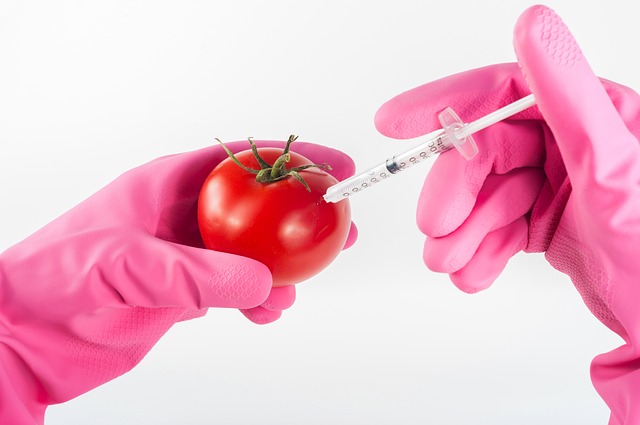1. GMO stands for: Genetically Modified Organism
What kind of organism is that? This technology is the laboratory result to create transgenic organisms. It is called transgenic because it involves gene transmission from one species to another.
The genes from one species’ DNA are carefully extracted and then artificially forced into the unrelated species of plant or animal to create the transgenic organism with some intended benefits. The foreign genes that they forcedly introduce to the targeted plant or animal may come from viruses, certain bacteria, insects, certain animals and even human genes to create GMO food.
2. GMO exists because it is economically beneficial
The food industry is the biggest business in the world and GMO technology is there to assure that raw food supplies will never end. Foods such as vegetables, fruits, and meat will be created to be bigger, harvested faster, pesticide-resistant and another benefit to the business is that they can be produced or grown fast enough that they will never run out of stock.

3. GMO foods do not give us the right nutritional profile
The biggest debate about GMO foods is the nutrient content. The artificial mutation had reported caused excessive or inadequate nutrient profiles in modified foods. Some adjustments have even destroyed the nutrient content in some GMO foods.
The fact is, GMO foods have not yet been proven safe to consume and the investigation and research about long term health risks still going on to this day. There is no consensus or agreement based on scientific research that GMO foods are harmless to human health.
4. Most of the food we take are probably GMO foods anyway
The
list of GMO foods continues to grow, following the first edible GMO products introduced
in the mid-1990s. The commonly identified GMO foods today are corn, canola,
alfalfa, soybeans, and sugar beets. GMO salmon is also recorded to be available
at retail.
While some European countries have taken steps to ban GMO products, the
implementation for GMO labelling is poor because of the big impact on profits
in the food manufacturing industry and agriculture business globally.
5. GMO foods and health
While there has not been enough time to discern the overarching long term effects of GMO foods on health, some feel that consuming too much GMO foods will encourage immune system disorders and possibly accelerate the aging process.

Studies on GMO food genes are conducted on a case by case basis because there is no single catch all process that can cover every modification. Initial human studies show that the modified genes inside GMO foods can be transferred to the human body by ingestion. The insecticides that are part of GMO corn for example, can be found in trace quantities in the human body upon ingestion.
8 ways to Avoid GMO Food
There are ways to avoid GMO foods in your meal without relying on looking for the GMO label.
1. Avoid packaged food
80 per cent of all the packaged food on the market, especially from the USA, contain GMOs. Stop buying canned food, packed food, and junk food unless you believe it is processed naturally.

2. Buy food labelled 100% organic
The GMO label is poorly implemented but the label that you can trust is “100 per cent organic”. If you look at the label only mentioning “organic”, “natural”, or “free-range”, the product may be made with up to 30 per cent GMO content.
3. 100% grass-fed meat for protein.
When buying protein or meats, you can distinguish GMO protein with GMO-free protein by looking for 100 per cent grass-fed meats. The cattle, sheep and other farm animals would have been fed with 100% organic grass.
4. Buy the fish from the wet market
This is actually quite simple. You can get your fish supply from the fishmonger or the directly from the fisherman at the wet market. Fish that is freshly caught from the sea have very low potential of including GMO.
5. Grow your own garden
The rule is, buy the non-GMO seeds. It is not too late because most of the Asian countries still have 100 per cent organic seeds for fruits and vegetables. You can set your own garden and even if you live in an apartment, some of the fruits and vegetables can be planted in a pot!

6. Eating in a restaurant
If you know there is a restaurant that chooses only fresh ingredients, that is the type of restaurant that you should go. The key is to find places that are keen on serving genuinely healthy foods. If you’re feeling extremely pedantic, you also could ask them if they are using corn oil or soy oil as these are made mostly from GM ingredients!
7. Stay away from imported high–risk crops
Stay
away with vegetables or fruits that imported from the USA or other modern
countries that are heavily utilising GMO technology in their agriculture.
Common foods and vegetables that genetically modified include squash, zucchini,
soy, canola, cotton, corn, alfalfa, sugar beets and papaya. You should buy locally
grown fruits that free from gene modification and chemical pesticides from Japan,
South Korea, India, Malaysia and other organic agriculture countries.
8. Read your food or personal product label
You should make it a habit to read food labels while shopping. Stay away from these artificial ingredients because it is derived from GMO crops.
- amino acids (synthetic form, not naturally occurring in protein)
- aspartame
- ascorbic acid (synthetic vitamin c)
- sodium ascorbate
- citric acid
- sodium citrate
- ethanol
- high fructose corn syrup
- hydrolysed vegetable protein
- lactic acid
- maltodextrins
- molasses
- monosodium glutamate
- sucrose
- textured vegetable protein
- xantham gum
- yeast products.






Comment (0)